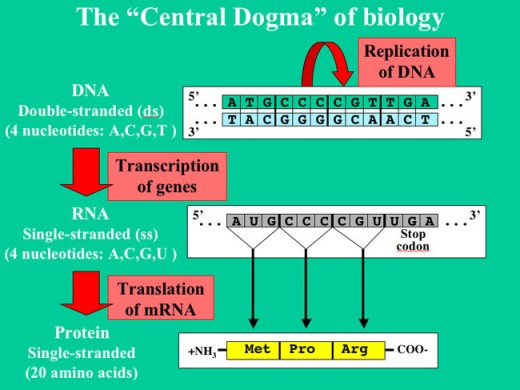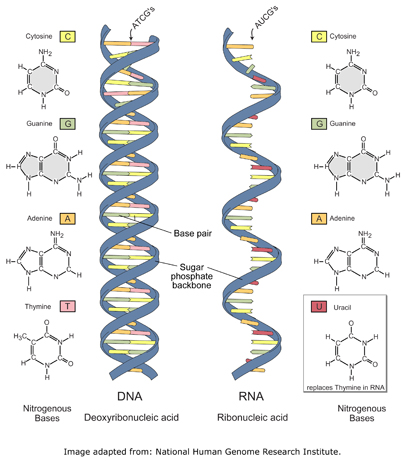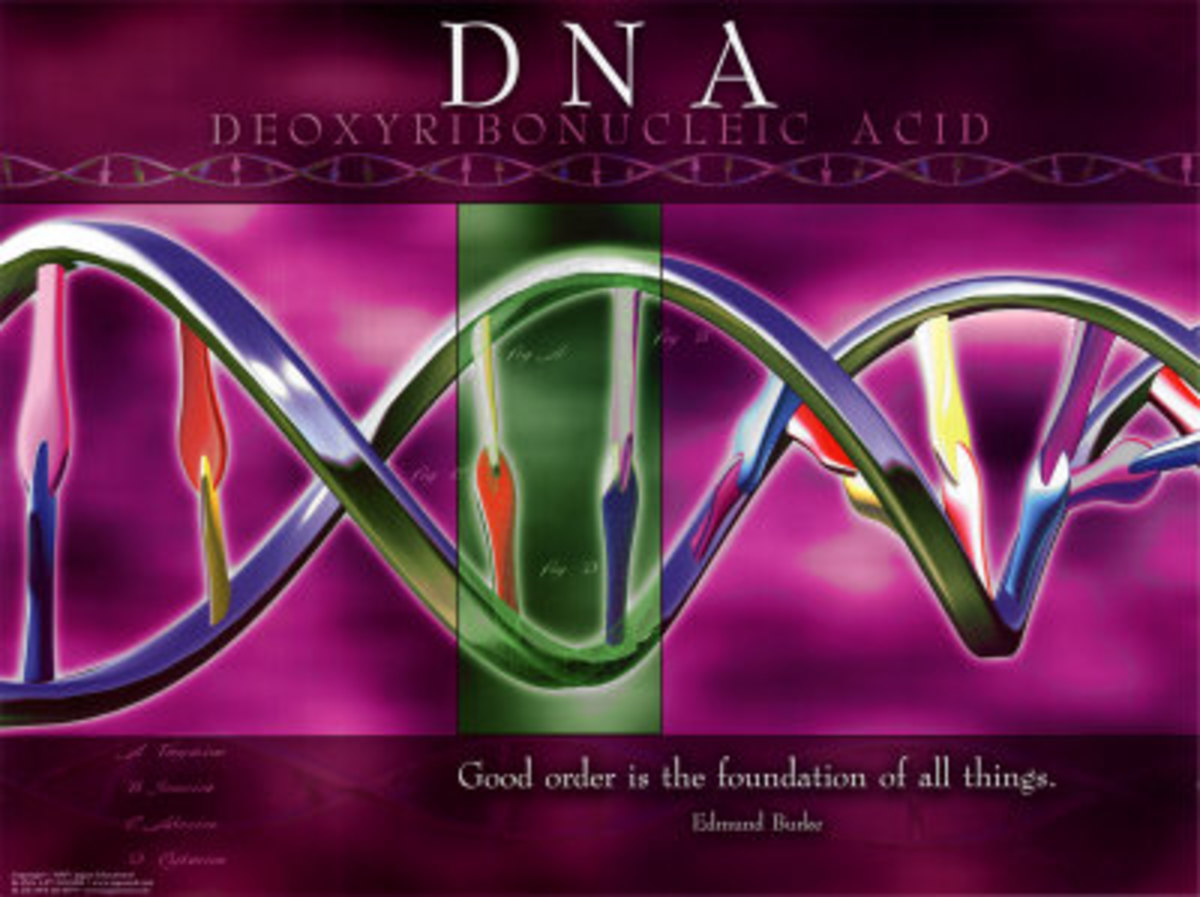Genetics: What is the Central Dogma? (Replication, Transcription, and Translation)

The central dogma is the core of genetics. It states that DNA is transcribed into RNA, which is translated into proteins. This is the process by which organisms are capable of synthesizing proteins necessary for life.
Summary:
(DNA --> RNA --> Proteins)
DNA Replication
DNA Replication is the process by which DNA copies itself.
Process:
- DNA is unwound.
- The strands are separated and held apart.
- DNA Polymerase helps in the addition of nucleotide bases (A, T, C, G) complementary to the template strand.
- DNA winds itself back up.
Result: 2 identical strands (assuming everything goes perfectly)
DNA and RNA

Transcription
Transcription is the process by which RNA is synthesized from DNA.
Process:
- DNA is unwound.
- The strands are separated and held apart.
- RNA Polymerase II helps in the addition of nucleotide bases (A, U, C, G) complementary to the template DNA strand.
- The RNA strand separates from the DNA strand.
- The DNA strands come back together.
- DNA is rewound.
Result: RNA strand
Translation
Translation is the process by which proteins are synthesized from RNA, specifically mRNA or messenger RNA.
Process:
- mRNA leaves the nucleus and enters the cytoplasm.
- The small ribosomal subunit attaches to the mRNA.
- The large ribosomal subunit attaches.
- tRNA (transfer RNA) enters the ribosome and pairs with an mRNA codon, a group of 3 nucleotide bases (tRNA contains an anticodon and an amino acid specific to its anticodon).
- As the mRNA moves through the ribosome, the tRNA shifts over, and another tRNA is added.
- When the mRNA continues, the amino acids are added together to form a polypeptide chain.
- When the sequence is terminated, the polypeptide chain is released.
- The polypeptide chain folds into a protein.
Result: Protein








